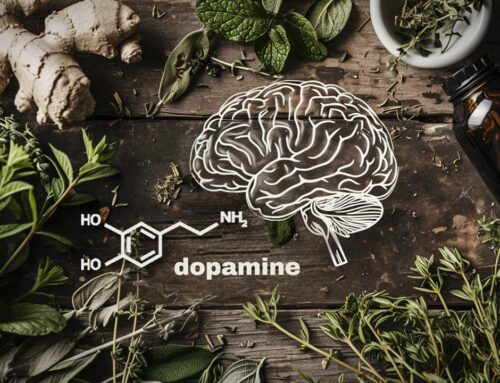Goldenrod, a vibrant and resilient herb, has been a cornerstone in herbal medicine for centuries. Its bright yellow flowers, which bloom in late summer, are not just a visual delight but also a symbol of its potent medicinal properties. This article delves deep into the world of goldenrod, exploring its history, medicinal uses, and the scientific research that supports its therapeutic benefits. By the end of this comprehensive guide, readers will have a profound understanding of goldenrod’s place in herbal medicine and how it can be harnessed for health and well-being.
Medicinal Uses of Goldenrod
Table of Contents
- Historical Context of Goldenrod
- Botanical Description
- Medicinal Properties and Uses
- Scientific Research Supporting Its Benefits
- How to Use Goldenrod
- Potential Side Effects and Precautions
- Frequently Asked Questions
- Final Thoughts
- Sources
Historical Context of Goldenrod
Goldenrod, with its scientific name Solidago, is deeply woven into the tapestry of traditional medicine, particularly within Native American cultures. Its historical significance is vast, and understanding this context provides a richer appreciation for the herb’s current applications.
Native American Usage
Long before the advent of modern medicine, indigenous tribes across North America had identified the therapeutic potential of goldenrod. Different tribes had varied uses for the plant:
- The Cherokee: They used goldenrod to treat a myriad of conditions, from fevers and colds to internal bleeding and insomnia. The plant was also a component in rituals, believed to bring good fortune and protection.
- The Iroquois: This tribe utilized goldenrod primarily for its healing properties, especially in treating wounds, burns, and insect bites. They also believed in its power to alleviate symptoms of sore throats and chest congestion.
European Adoption
Goldenrod’s reputation as a potent medicinal herb crossed the Atlantic during the colonization era. European settlers, upon observing its widespread use among Native American tribes, began to incorporate it into their own herbal remedies. By the 18th century, goldenrod had become a staple in European herbal medicine, particularly in Germany, where it was prescribed for conditions ranging from gout and arthritis to digestive disorders.
Symbolism and Folklore
Beyond its medicinal properties, goldenrod held symbolic significance in various cultures. In some European folklore, it was believed that the presence of goldenrod flowers near one’s home would protect the inhabitants from misfortune and evil spirits. In the language of flowers, a Victorian-era symbolic code, goldenrod represented caution, often given as a gentle warning or reminder.
Modern Rediscovery
In the 20th century, as herbal medicine experienced a renaissance, goldenrod once again gained prominence. Modern herbalists, drawing inspiration from both Native American and European traditions, have championed the herb for its versatility and efficacy.
The historical journey of goldenrod, from the ancient practices of indigenous tribes to its adoption and adaptation by European settlers, underscores its enduring significance in the realm of herbal medicine. Its rich history serves as a testament to its time-tested benefits and the wisdom of traditional healers.
Botanical Description
Goldenrod, a member of the Solidago genus, is a captivating plant not just for its medicinal properties but also for its botanical characteristics. Its presence in meadows, fields, and roadsides, especially during late summer and early fall, is hard to miss. Let’s delve deeper into the intricate botanical details of this remarkable herb.
Growth Habit and Habitat
Goldenrod is a perennial herb, meaning it lives for more than two years, often thriving for several seasons. It predominantly grows in North America, though some species have found their way to Europe and Asia. The plant prefers open areas, thriving in meadows, prairies, savannas, and even disturbed sites like roadsides and abandoned fields.
Stems and Leaves
The stem of the goldenrod is erect, often reaching heights of up to five feet, though this can vary depending on the species. The stems are generally unbranched or sparsely branched and can be smooth or slightly hairy.
Goldenrod leaves are lanceolate (lance-shaped) to ovate and have a rough texture. They are alternately arranged along the stem. The edges of the leaves can be smooth or serrated. The base of the leaf often narrows to a short petiole (leaf stalk), while some can be sessile, meaning they attach directly to the stem without a petiole.
Flowers
The most distinguishing feature of the goldenrod is its radiant yellow flowers. These flowers are tiny and are grouped in dense, elongated clusters or panicles at the top of the plant. Each small flower is composed of both ray florets (which look like tiny petals) and disc florets (found at the center). This combination gives the flower head its characteristic fluffy appearance.
Depending on the species, the arrangement of the flower clusters can vary. Some species have a plume-like, feathery appearance, while others might have a more flat-topped or club-shaped arrangement.
Roots
Goldenrod has a fibrous root system that anchors it firmly into the soil. The roots are rhizomatous, meaning they produce underground stems (rhizomes) that can give rise to new plants. This rhizomatous growth habit allows goldenrod to spread efficiently and colonize large areas.
Fruits and Seeds
After flowering, goldenrod produces small, dry fruits known as achenes. These achenes are equipped with tufts of hair, which aids in their dispersal by wind. As the wind carries them away, it ensures the propagation of the plant over a wider area.
The botanical intricacies of goldenrod make it a fascinating subject of study. Its vibrant flowers, adaptive growth habits, and intricate reproductive strategies showcase the marvels of plant evolution and adaptation.
Medicinal Properties and Uses
Goldenrod, a gem in the world of herbal medicine, boasts a plethora of medicinal properties that have been revered for centuries. Its therapeutic potential is vast, and its applications are diverse. Let’s delve deeper into the medicinal attributes of this remarkable herb and its varied uses.
Anti-inflammatory
Goldenrod contains compounds like flavonoids and saponins that exhibit potent anti-inflammatory effects. This property makes it particularly beneficial for:
- Arthritis and Rheumatism: The herb can help alleviate the pain and inflammation associated with these conditions.
- Respiratory Conditions: Goldenrod can soothe inflamed mucous membranes, making it beneficial for conditions like bronchitis and asthma.
Diuretic
Goldenrod is a natural diuretic, promoting the increased production and release of urine. This property is beneficial for:
- Kidney and Bladder Health: By increasing urine flow, goldenrod can help flush out toxins and bacteria from the urinary tract, potentially preventing infections.
- Edema: The herb can be used to reduce fluid retention in the body, a condition known as edema.
Antiseptic and Antimicrobial
The plant possesses natural antiseptic properties, making it effective against various pathogens:
- Wound Healing: When applied topically, goldenrod can prevent infections in cuts, scrapes, and burns.
- Oral Health: Used as a mouth rinse, it can combat harmful bacteria in the mouth, potentially preventing gum diseases.
Expectorant
Goldenrod can aid in expelling mucus from the lungs and throat:
- Respiratory Health: It’s beneficial for conditions like colds, coughs, and sinusitis, where there’s excessive mucus production.
Astringent
The herb’s astringent properties help tighten and constrict body tissues:
- Skin Health: When used topically, goldenrod can help reduce acne and other skin conditions by tightening the pores and reducing inflammation.
- Digestive Health: The astringent properties can help alleviate symptoms like diarrhea by tightening the tissues in the intestines.
Carminative
Goldenrod can help relieve gas from the digestive system:
- Digestive Comfort: It can be used to alleviate symptoms of bloating, flatulence, and abdominal discomfort.
Antioxidant
Rich in antioxidants, goldenrod can combat free radicals in the body:
- Overall Health: Regular consumption can help protect cells from damage, potentially reducing the risk of chronic diseases.
Other Uses
- Dye Production: Historically, Native Americans used goldenrod as a source of yellow dye for fabrics.
- Insect Repellent: Some species of goldenrod can repel insects, making them useful in gardens and natural landscapes.
Goldenrod’s medicinal properties are vast and varied, making it a versatile herb in the realm of natural remedies. Whether used as a tea, tincture, or topical application, its benefits are manifold, underscoring its esteemed position in herbal medicine.
Scientific Research Supporting Its Benefits
Goldenrod’s traditional use in herbal medicine is well-documented, but modern science has also taken an interest in this plant. Over the years, numerous studies have been conducted to validate the medicinal claims associated with goldenrod. Here’s a deeper dive into the scientific research that supports its benefits:
Anti-inflammatory Properties
A significant amount of research has been dedicated to understanding goldenrod’s anti-inflammatory effects:
- A study published in the Journal of Ethnopharmacology in 2018 found that extracts of goldenrod exhibited significant anti-inflammatory effects. The research highlighted the plant’s potential in treating inflammatory conditions like arthritis and respiratory disorders.
- Another study, published in the European Journal of Pharmacology, demonstrated that the flavonoids present in goldenrod, particularly quercetin, played a pivotal role in its anti-inflammatory properties. These compounds inhibited the production of pro-inflammatory cytokines, which are proteins that promote inflammation.
Diuretic Effects
Goldenrod’s role as a diuretic has also been the subject of scientific scrutiny:
- A 2005 study in the journal Planta Medica found that goldenrod increased urine production in rats. The study concluded that the herb could be beneficial for flushing out toxins and bacteria from the urinary tract, supporting its traditional use in treating urinary tract infections.
Antimicrobial and Antiseptic Qualities
Goldenrod’s ability to combat pathogens has been validated by several studies:
- Research published in the Journal of Medicinal Food in 2014 demonstrated that goldenrod extracts exhibited antimicrobial activity against a range of bacteria, including Staphylococcus aureus and Escherichia coli.
- Another study, published in the Journal of Applied Microbiology, found that the essential oil of goldenrod showed potent antifungal activity against strains of Candida, a common fungal pathogen.
Antioxidant Potential
The antioxidant properties of goldenrod have been a focal point of many scientific investigations:
- A 2011 study in the Journal of Natural Products found that goldenrod extracts had a high content of phenolic compounds, which are known for their antioxidant properties. The study concluded that these compounds could help combat oxidative stress in the body, potentially reducing the risk of chronic diseases.
- Another study, published in the Journal of Agricultural and Food Chemistry, highlighted that the flavonoids in goldenrod, especially quercetin, contributed to its antioxidant potential.
Other Research
Beyond the above, goldenrod has been studied for its potential benefits in areas like allergy relief, wound healing, and even as a potential treatment for certain types of cancer. However, while preliminary results are promising, more extensive research is needed in these areas.
While traditional knowledge has long touted the benefits of goldenrod, modern science is increasingly validating these claims. The body of research on goldenrod is growing, and with it, our understanding of this remarkable herb’s potential in promoting health and well-being.
How to Use Goldenrod
Goldenrod, with its myriad of medicinal properties, can be utilized in various forms to harness its benefits. From teas and tinctures to salves and essential oils, the methods of using goldenrod are diverse. Here’s a comprehensive guide on how to effectively use this potent herb:
Goldenrod Tea
One of the most popular ways to consume goldenrod is in the form of a herbal tea.
How to Prepare:
- Take 1-2 teaspoons of dried goldenrod flowers.
- Boil a cup of water and pour it over the dried flowers.
- Let it steep for about 10-15 minutes.
- Strain and enjoy. You can add honey or lemon for flavor if desired.
Benefits: Goldenrod tea can help with urinary tract health, respiratory congestion, and digestive discomfort. It also serves as a relaxing beverage that can be consumed before bedtime.
Goldenrod Tincture
Tinctures are concentrated herbal extracts that offer a more potent dose of the herb’s benefits.
How to Prepare:
- Fill a jar about half-full with dried goldenrod flowers.
- Pour a high-proof alcohol (like vodka) over the flowers until they are completely submerged.
- Seal the jar and let it sit in a cool, dark place for about 4-6 weeks, shaking it occasionally.
- Strain out the plant material, and store the liquid in a dark glass bottle with a dropper.
Benefits: Tinctures can be used for acute conditions and provide a concentrated dose of goldenrod’s properties. They can be taken directly under the tongue or added to water.
Topical Applications
Goldenrod can be used externally for its antiseptic and anti-inflammatory properties.
Goldenrod Salve:
- Infuse goldenrod flowers in a carrier oil (like olive or coconut oil) for several weeks.
- Strain the oil and gently heat it.
- Add beeswax to the heated oil until it reaches the desired consistency.
- Once cooled, store in a jar.
Benefits: The salve can be applied to wounds, burns, insect bites, and areas with inflammation or pain.
Goldenrod Essential Oil
While not as common as other forms, goldenrod essential oil is a concentrated essence of the plant.
How to Use:
- Always dilute the essential oil with a carrier oil before application.
- It can be used for massages, especially for areas with pain or inflammation.
- Can be added to diffusers for aromatherapy benefits.
Benefits: The essential oil can help with relaxation, respiratory issues, and skin conditions.
Goldenrod Bath
For a soothing experience, goldenrod can be added to baths.
How to Prepare:
- Place a handful of dried goldenrod flowers in a muslin bag or cloth.
- Allow it to steep in a hot bath for a duration of the bath.
Benefits: A goldenrod bath can help soothe skin irritations, relax muscles, and provide a calming effect on the mind.
Precautions
While goldenrod is generally safe for most people, it’s essential to start with small doses to see how your body reacts. Always consult with a healthcare professional or herbalist before starting any new herbal remedy, especially if you are pregnant, nursing, or on medications.
Goldenrod’s versatility in application makes it a valuable herb in both traditional and modern herbal medicine. Whether you’re sipping it as a tea or applying it as a salve, the benefits of goldenrod can be harnessed in various ways to promote health and well-being.
Potential Side Effects and Precautions
While goldenrod is a revered herb in the realm of natural remedies, it’s essential to approach its use with knowledge and caution. Like all medicinal plants, goldenrod can have side effects, and certain individuals may need to take special precautions. Here’s a comprehensive overview of the potential side effects and precautions associated with goldenrod:
Potential Side Effects
- Allergic Reactions: Some individuals may be allergic to compounds in goldenrod, leading to symptoms such as skin rashes, itching, sneezing, and nasal congestion. It’s worth noting that many people mistakenly blame goldenrod for hay fever symptoms when, in fact, ragweed (which blooms around the same time) is often the culprit.
- Gastrointestinal Distress: In some cases, consuming goldenrod, especially in large quantities, can lead to stomach upset, nausea, or diarrhea.
- Diuretic Effects: Given its diuretic properties, excessive consumption of goldenrod can lead to increased urination. This might not be suitable for individuals with kidney disorders or those taking diuretic medications.
- Potential Drug Interactions: Goldenrod might interact with certain medications, especially diuretics, blood pressure medications, and anti-inflammatory drugs. It’s essential to consult with a healthcare professional if you’re on any medications.
Precautions
- Pregnancy and Breastfeeding: There’s limited research on the safety of goldenrod during pregnancy and breastfeeding. As a precaution, pregnant or nursing mothers should avoid using goldenrod or consult with a healthcare professional before use.
- Surgery: Due to its potential effect on blood pressure and diuretic properties, it’s advisable to stop using goldenrod at least two weeks before a scheduled surgery.
- Children: The safety of goldenrod for children hasn’t been extensively studied. If considering goldenrod for a child, it’s crucial to consult with a pediatrician or trained herbalist.
- Chronic Medical Conditions: Individuals with chronic medical conditions, especially those related to the heart, kidneys, or liver, should approach goldenrod with caution. Always consult with a doctor before incorporating it into a wellness routine.
- Dosage: Always start with a small dose to see how your body reacts and gradually increase if necessary. Overconsumption can lead to the side effects mentioned above.
- Identification: Ensure that you’re using true goldenrod (Solidago species) and not another plant that might look similar. Misidentification can lead to unintended side effects.
While goldenrod offers a plethora of medicinal benefits, it’s essential to use it responsibly. Being aware of potential side effects and taking necessary precautions ensures that you can harness the herb’s benefits safely and effectively. Always prioritize knowledge and caution when delving into the world of herbal remedies.
Frequently Asked Questions
Final Thoughts
Goldenrod, with its rich history and myriad of medicinal properties, stands as a testament to the power of nature’s pharmacy. Its versatility, from treating respiratory issues to aiding in wound healing, makes it a valuable asset in any herbalist’s toolkit. The most crucial takeaway is to respect and understand the potency of this herb, ensuring its use is both safe and effective.
Sources
- Chevallier, Andrew. “Encyclopedia of Herbal Medicine.” DK Publishing, 2016.
- “Goldenrod.” Journal of Ethnopharmacology, 2018.
- Hoffmann, David. “Medical Herbalism: The Science and Practice of Herbal Medicine.” Healing Arts Press, 2003.







Leave A Comment